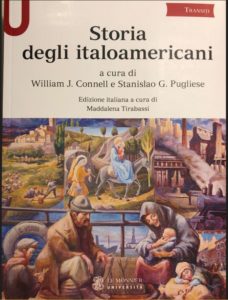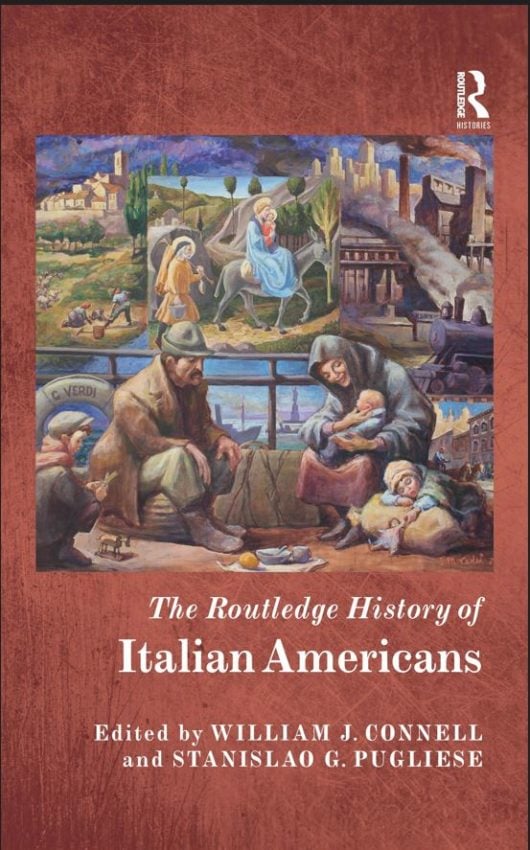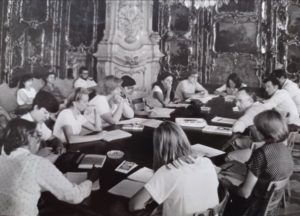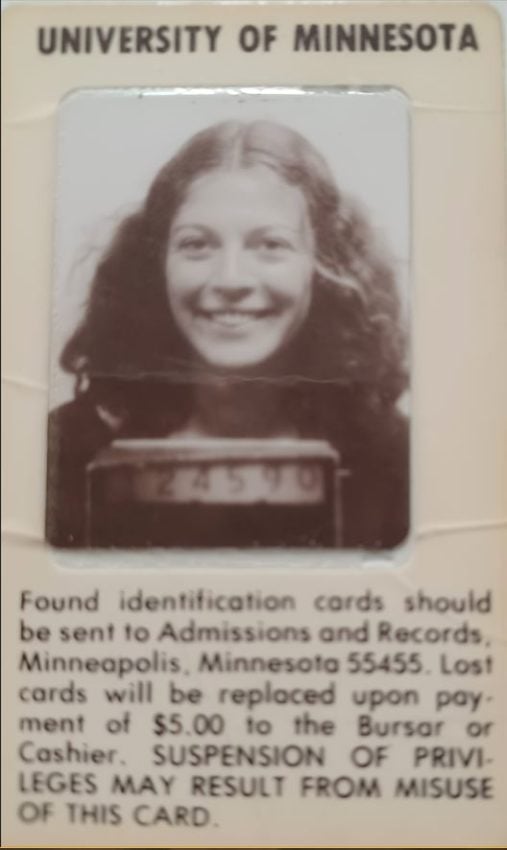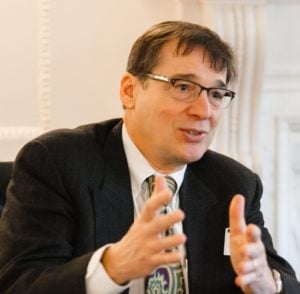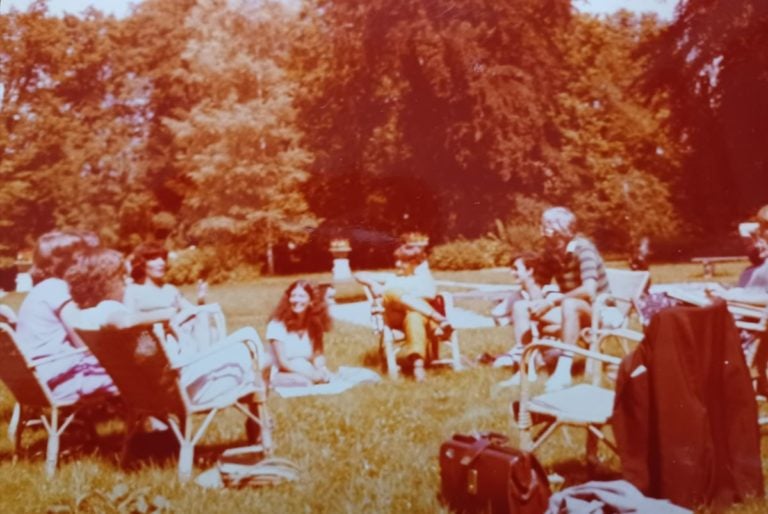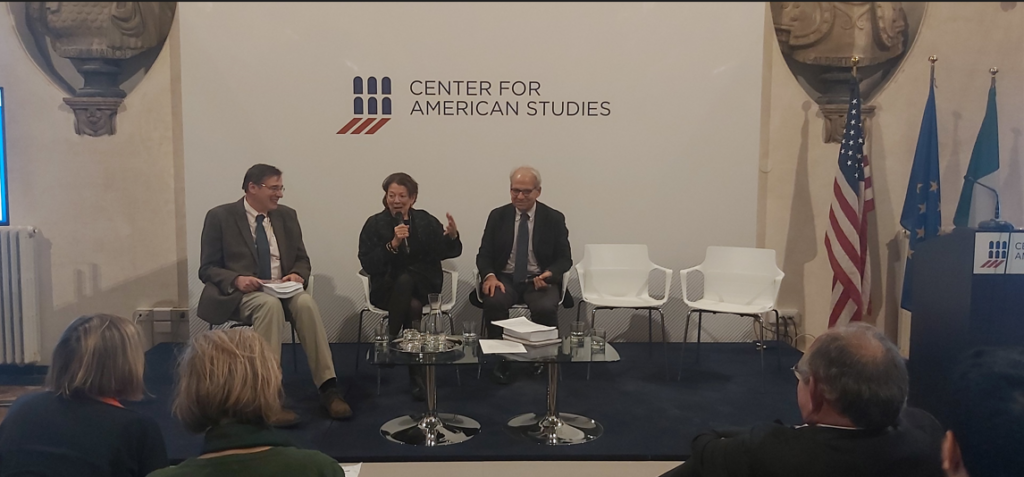
This year marks the 75th anniversary of the Fulbright Commission Italy.
During the Annual Meeting in June, the 6 Fulbrighters -who have won the Fulbright 75th Anniversary award- will be awarded.
On this occasion, we interviewed them to better understand who they are and what they do. This is the time of prof. William Connell and prof. Maddalena Tirabassi.
1 Introduce yourself: what do you currently do?
Connell:
I am a professor of history at Seton Hall University, a Catholic university in South Orange, New Jersey, where I hold the La Motta Endowed Chair in Italian Studies. I publish widely on historical topics that usually involve Italian or Italian American history, and I have made a point of involving New Jersey’s large Italian American community in our programs and research. The archival discoveries that I first made when a Fulbright Scholar in Italy, and that I continue to make, shed new light on Machiavelli, the Medici, and reform efforts in the Catholic Church. I did my undergraduate work at Yale, I received my Ph.D. from the University of California at Berkeley, and most recently I received a prestigious Andrew Carnegie Fellowship. I serve on many editorial boards and prize committees, and I was one of the founding commissioners of the State of New Jersey’s Italian Heritage Commission. It’s a point of pride with me that so much of my career has been devoted to advancing the study of Italian history in the United States.
Tirabassi:
I am the director of the Centro Altreitalie sulle Migrazioni Italiane, and editor of the biannual journal Altreitalie, International journal on Italian Migrations in the World. I publish on past and present migration issues, migrant women’s history and gender studies, migration public history (exhibitions and Museums). I serve on many editorial boards and prize committees: International Migration Review, Archivio storico delle migrazioni Italiane, Calandra Italian American Institute, CUNY, Associazione Ischitani nel Mondo,
Fondazione Casa America, Genova. Mission of Altreitalie Journal has been -from its foundation in 1989- to facilitate the dialogue among scholars on both side of the Atlantic and to make Italian public aware of the outcomes of centuries of Italian migrations.
2 At what point in your academic and professional career did you decide to apply for a Fulbright grant to Italy/to the US and why?
Connell:
It was 1985, and I was a graduate student working toward my Ph.D. at Berkeley, when I applied for a Fulbright. I had already had two experiences of living in Italy: in the summer of 1980 I worked as a gardener on an estate on the island of Elba, and in 1982 I was a researcher in the Florentine Archivio di Stato. I was eager, as an American, for the opportunity to engage Italian scholars on the subjects of their own work, and a series of continuing and productive transatlantic friendships resulted.
Tirabassi:
I graduated at the University of Florence in American History with a thesis on the Italian exiles in the US during Fascism thanks to a scholarship from Rutgers University, NJ., in my second year of University. After graduation, since at that time there were no a Master or Ph.D program in Italy, I applied for scholarships from the Centro Studi Americani in Rome to attend their annual Seminars in American History and twice from the Salzburg Seminar in American Studies. The first time in Salzburg I met Henry Steele Commager (the American Revolution seminar) and the second William Chafe (The American Women History seminar), a dream for an Italian student to get to know the author you were reading. In 1979 my professors Pietro Russo and Anna Maria Martellone proposed me to apply for a Fulbright. I choose the University of Minnesota because of the Immigration History Research Center, at that time the best in the world to do Italian migration research thanks to its director Rudolph Vecoli, whom I had already met in Florence. That was also the starting of a lifelong friendship. At the IHRC I started to do research on Italian migrant women and on US feminism.
3 When you recall your stay in Italy/US what is the first image that comes up to your mind?
Connell:
Invariably I think of my first meeting with the historian Giorgio Spini and our lunch in a trattoria in Via San Gallo in Florence after I had listened to him lecture. In Rome, the Director of the Fulbright Commission, Cipriana Scelba, had asked if there were any professors to whom she might address letters introducing me. I gave her several names, and to judge from the manner in which these scholars welcomed me, the letters must have been quite strong. Spini had been the first that I telephoned. My Fulbright project was a study of Florentine rule in Tuscany in the 15th and 16th centuries, about which Spini had published important work. But our conversation at lunch was about American things. I knew his wonderful book on early American history writing, Autobiografia della giovane America, which I praised; and he replied by telling me about his work at Harvard with Perry Miller on New England Puritans; I brought up Lincoln’s offer to Garibaldi of a command in the Union Army; and he told me about British and American naval maneuvers in support of the expedition of the Mille. A friendship that began over lunch continues to this day in the next generation. Two years ago my daughter Zoe took a course in Florence that was taught by Giorgio’s daughter, Debora Spini.
Tirabassi:
The easy life of students living in campuses, the beautiful libraries…
4 Could you tell us more about the project that has been awarded for the 75th Fulbright Italy Anniversary?
Connell:
Our project began long ago, in 2011. Several leaders of the Italian American charitable organization UNICO approached me to discuss a way of bringing together and celebrating a series of endowed chairs, libraries and research centers in Italian and Italian American Studies at American universities that UNICO had supported. (These included my own La Motta Chair). I pointed out that, even as student interest was growing in Italian American history, and academic research was resulting in impressive work in single areas, there was no reliable history that covered the whole Italian experience in America that would meet academic standards. One of the problems was the very fine specialized work we do. I suggested that a multi-authored book, with well-illustrated chapters written by acknowledged experts on topics extending from early exploration to 21st century Italian American youth culture, was what was needed, both to provide our students with a reliable textbook, and to replace the many myths of Italian American history with a reliable historical account. UNICO liked the idea, offered a generous grant for the project, and from there it took shape. I asked my friend Stanislao Pugliese, a distinguished historian and the holder of a UNICO endowed chair at Hofstra University, to co-edit the book with me. We invited forty scholars to write chapters on particular aspects of Italian American history. And, after much work by many, in 2018 the book was published to great success as
The Routledge History of Italian Americans. Our Italian colleague, Maddalena Tirabassi, editor of the journal AltreItalie, had contributed two of the book’s chapters, and when we approached her about directing an Italian edition she graciously accepted our invitation, coordinated the many translations that were required, and in record time saw the Storia degli italoamericani through to its publication by Mondadori in 2019.
Tirabassi:
The proposal of coediting the translation of the massive History of Italian Americans into Italian was an exciting challenge. As editor of Altreitalie for so many years I was used to organize various authors, around 40, plus the translators! Mainly, I shared William Connell and Stanislao Pugliese’s approach according which the “ growing field of Italian American Studies lacked a reliable single-volume history that encompassed the full chronological and subject range of the Italian American experience”. To me the volume would also help to dismantle the many stereotypes that affected Italian Americans image in Italy. Finally, the Impressive research carried out separately in Italy and the US needed crosspollination.
